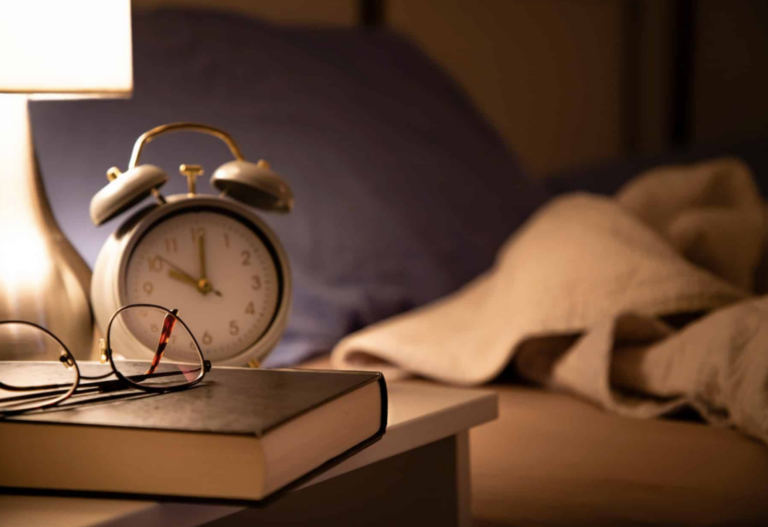Migraine disease has long perplexed medical experts and researchers. While the causes of migraine attacks have been attributed to different factors such as genetics and triggers, in the past few months, migraine research reveals a new correlation between the disease and a new factor: circadian rhythms. In this article, we’ll delve into recent research exploring the impact of circadian rhythms on migraine, tracing their historical context, and ultimately piecing together a bit of the puzzle that has long eluded medical professionals and migraineurs alike.
1. What are Circadian Rhythms?
Often labeled the body’s internal clock, circadian rhythms are the natural, internal processes that occur over a 24-hour-cycle. These physical, mental, and behavioral responses to external stimuli regulate our sleep-wake cycle, metabolism, homeostasis, and various physiological functions throughout the day.
While circadian rhythms are most closely associated with sleeping at night and staying awake during the day, it’s important to consider the impact of our master clock on hormone release, body temperature, hunger, digestion, mood, and even our cognitive performance as well – especially when it boils down to tracing the correlation between circadian rhythms and migraine.
2. History of Headaches + Circadian Rhythms
If you experience daily headaches, there are high odds that your headaches occur at the same time each day. The meta-analysis found that more than 70% of research participants experiencing cluster headaches across 16 studies reported more attacks during two “circadian-occurrences:”: 1) seasonal changes in the spring and fall and 2) between the late hours of the night and early hours of the morning.
But it’s not just our sleep-wake cycle that correlates headaches with circadian rhythms; many biomarkers for the circadian cycle are also altered in cluster headaches, including corticosteroids (the hormone that secretes cortisol at its highest amounts in the day) and melatonin (the hormone released at night in response to darkness).
Finally, when it comes to genetic predisposition, the meta analysis revealed that five of the nine genes associated with cluster headaches were also involved in regulating circadian rhythms
This correlation has been steadily clear to researchers for some time, with cluster headaches even cited as a partly “circadian disorder.” But what stands to question is the newfound impact and correlation of circadian rhythms with migraine, an entirely different head pain disorder than cluster headaches.
3. Digging into the Research
Let’s dig into the aforementioned research. Again, what surprised researchers wasn't the strong correlation between cluster headaches and circadian rhythms -- it was the statistically significant correlation between migraine and circadian rhythms. Dr. Barish provides a high-level overview of the potential impact of circadian rhythms on migraine:
“Migraine, however, is not thought of as a highly circadian disease. We were surprised to find that migraine has such strong circadian connections—50% of patients report migraine at the same time of day, there are lower melatonin levels in patients, and there are genetic connections to circadian genes, or genes controlled by the biological clock.” - Dr. Burish
While time of day certainly varied among migraine patients, the most common times for an attack ranged from late morning through early evening. According to the meta-analysis, attacks were less common overnight when the migraine circadian rhythm hit a low. Out of the 168 genes with a circadian pattern of expression, migraine related with 110.
And furthermore, the study suggested that circadian disruptions caused by irregular sleep patterns or environmental changes could even trigger migraines. Disrupted sleep and altered exposure to light are known to affect circadian rhythms, potentially leading to imbalances in hormone regulation and neurotransmitter activity – both of which are implicated in migraine pathophysiology.
4. The Hormone Impact
Finally, circadian rhythms are also strongly tied to the timing and amount of hormone release, and hormones are well-known to play a crucial role in migraine occurrence and intensity. One of the most enlightening results of the meta-analysis reveals that people who get frequent migraine attacks often produce less melatonin than people who don’t get these headaches, and produce even less during an attack – further corroborating to the emerging relationship between migraine and the body’s internal clock.
The hormone game is a complex one, with other hormones, such as estrogen for example, also being implicated in both circadian rhythms and migraines; females release fluctuating amounts of estrogen that are strongly linked to the onset of hormonal and menstrual migraines and believed to be a top reason for the reason why females are three times more likely to suffer from migraine than men.
While there are so many factors that play into this debilitating condition, there is no doubt that circadian rhythms may have just unlocked a missing piece to the puzzle of broader understanding, and eventual treatment, of migraine.
5. The Takeaway: Piecing Together the Puzzle
The intersection of circadian rhythms and migraines adds a new layer of complexity to our understanding of this debilitating condition. As research continues to piece together the links between our body's internal clock and migraine, the potential for more targeted and effective treatments grows.
For now, it’s important that migraineurs take proactive steps in managing what's controllable. Ensure proper sleep and sleep hygiene. As circadian rhythms are closely relate to sleep pattern, it's highly important to migraine managaement to establish a consistent sleep schedule. Prioritizing a peaceful sleep environment, practicing relaxation techniques before bedtime, and limiting screen time before sleep can help regulate circadian rhythms and potentially reduce the frequency and severity of migraines.
Another effective, controllable approach is identifying and controlling all of your unique triggers. By keeping a detailed record of potential triggers such as dietary factors, stressors, hormonal fluctuations, and environmental changes, individuals can gain insights into their unique triggers and significantly reduce their impact.
While we await further advancements in our understanding of the circadian-migraine-relationship, individuals can take charge of their well-being by integrating these practices into their daily routines. By mastering your triggers and fostering healthy sleep habits, you can empower yourself to embrace a better quality of life.



